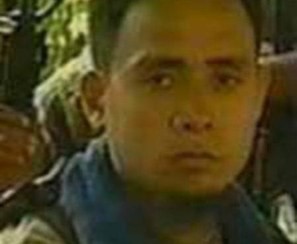A military raid on the hideout in Marawi City of an Arabic-speaking Islamic preacher has sparked a full-scale battle in the Lanao del Sur provincial capital and the proclamation of martial law in Mindanao.
Isnilon Hapilon, born in 1966 and later earned an engineering degree from the University of the Philippines, has long ties to local extremist movements.
Once a commander of the Moro National Liberation Front, he ascended the ranks of the Abu Sayyaf to become its second-in-command. The group is known for carrying out kidnappings and beheadings of Filipinos and foreigners, as well as bombings, assassinations and armed attacks.
Hapilon gained notoriety when he allegedly helped the Abu Sayyaf kidnap 20 hostages from Dos Palmas Resort in Palawan province in 2001. The victims included three US citizens, one of whom eventually was beheaded.
In 2002, the US Department of Justice indicted Hapilon over the Dos Palmas attack. He is included on the department’s “Most Wanted Terrorist” list, with a $5-million reward for information leading to his capture.
IS allegiance
In 2014, Hapilon appeared in a video beside two masked men pledging allegiance to the Islamic State (IS) group, which was then gaining ground in Iraq and Syria. He went on to organize an alliance in the Philippines called Dawlatul Islam Wilayatul Mashriq, which is now believed to include at least 10 small militant groups including some Abu Sayyaf factions.
Last year, Hapilon was reportedly chosen to lead the IS group branch in Southeast Asia.
The Philippine military has targeted Hapilon repeatedly with large-scale military operations, and has come close to killing him. But the militant leader remains elusive.
In 2008, troops bombarded an Abu Sayyaf camp near Jolo island with artillery and mortar fire, reportedly wounding Hapilon in the hand. He was also reportedly wounded in another operation in 2013.
The latest close call came in January, when the military attacked militants with ground troops and airstrikes, dropping 225-kilogram bombs from military jets.
The operation left 15 militants dead, and the Army said Hapilon was seriously wounded in the arm. Losing blood, he was placed on a makeshift stretcher, escaping into a mountainous region of Butig in Lanao del Sur.
Flag-raising
Joel Maturan, a former mayor of Ungkaya Pukan in Basilan province, recalled that Hapilon was in a group of terrorists, including two foreigners, that conducted in August 2014 a series of oath-taking rites for 250 fully armed bandits before the IS flag.
“They took oath, from one mountain to another, reaching out to all their networks in majority of the towns like Tipo-Tipo, Sumisip, Al-Barka, Tuburan,” Maturan then said.
But Gen. Rustico Guerrero, then chief of the military Western Command, dismissed the reports of IS presence in Mindanao.
“What we see is that they (Abu Sayyaf) are just riding on the popularity of the IS in the international forum. So we believe it is just but a local propaganda but they don’t have direct linkage in the international group,” Guerrero said.
To which Maturan replied: “I know it is an IS ideology but I don’t want to engage in an argument with our military and police authorities. I am giving all this information and it is up to them how to use it.”
Threat in Mindanao
Two years later, in November 2016, the military still insisted that there was no IS threat in any part of the Autonomous Region in Muslim Mindanao.
Gen. Ricardo Visaya, then chief of staff of the Armed Forces of the Philippines, said he had not received any official confirmation of IS operating in Basilan, Sulu province or elsewhere in the country.
“As far as we are concerned, these are raw information. We have really to evaluate this information, Visaya said.
On Tuesday, security forces clashed with local militants belonging to the Maute group and Hapilon’s Dawla Islamiyah, confirming Maturan’s fears. —REPORTS FROM AP AND JULIE S. ALIPALA
